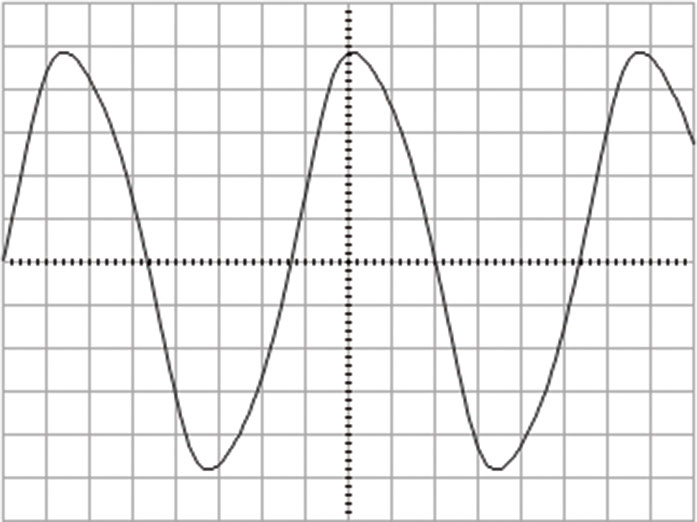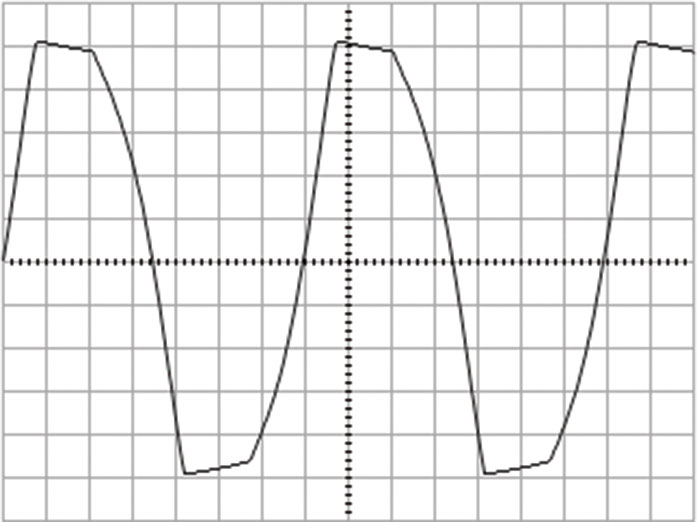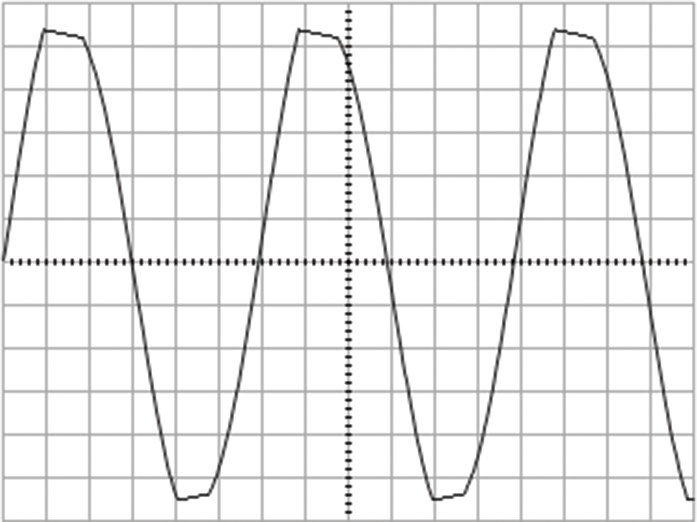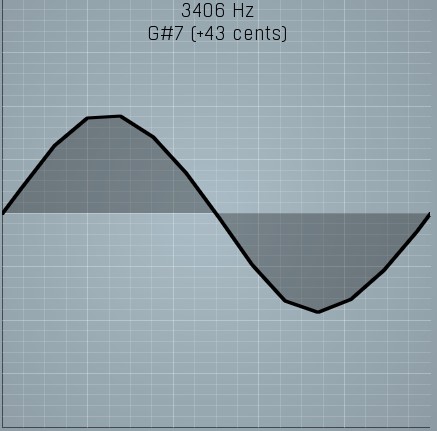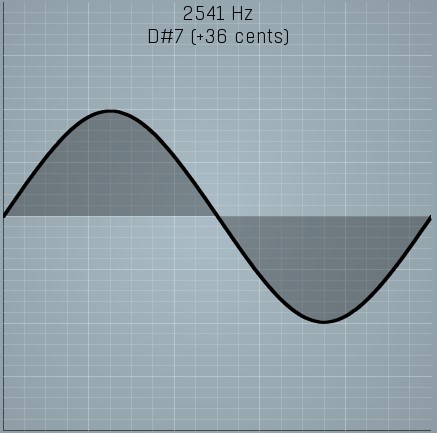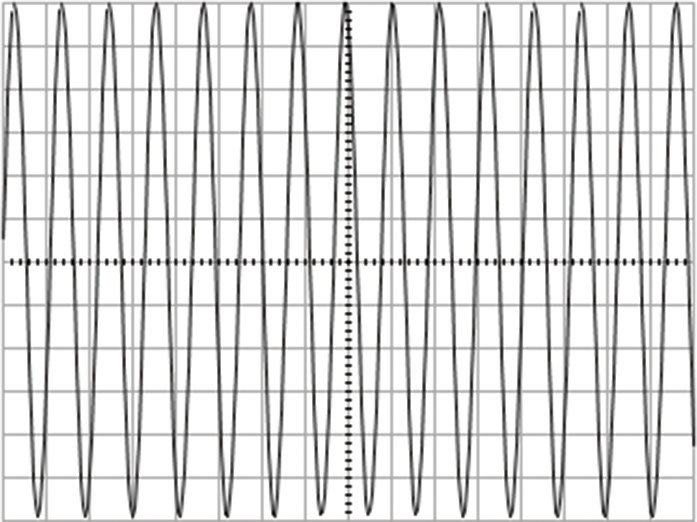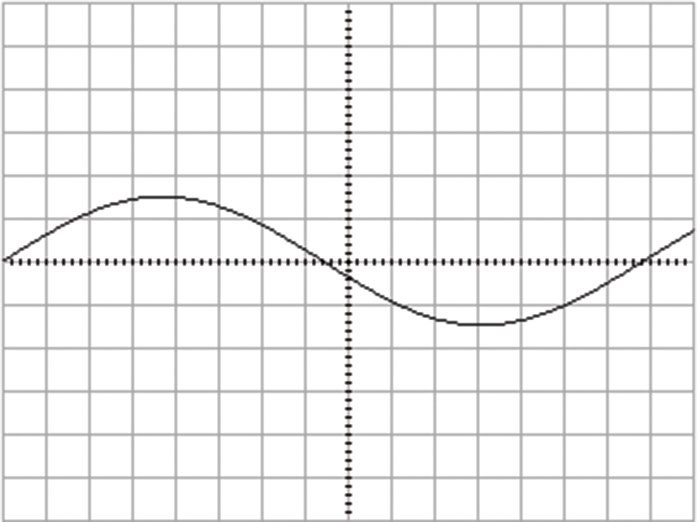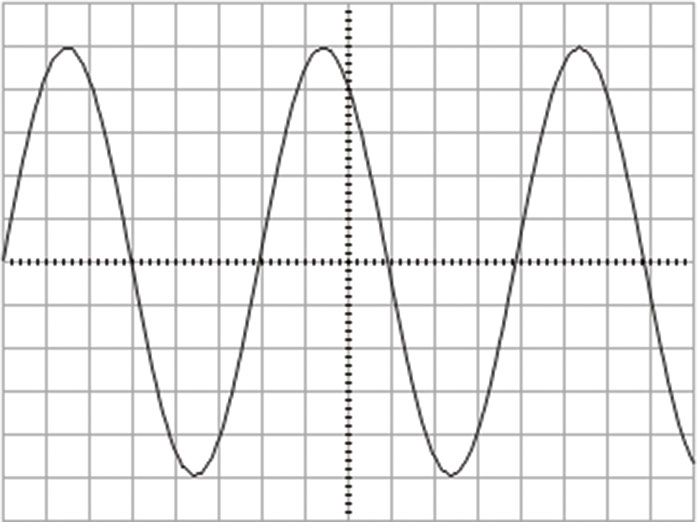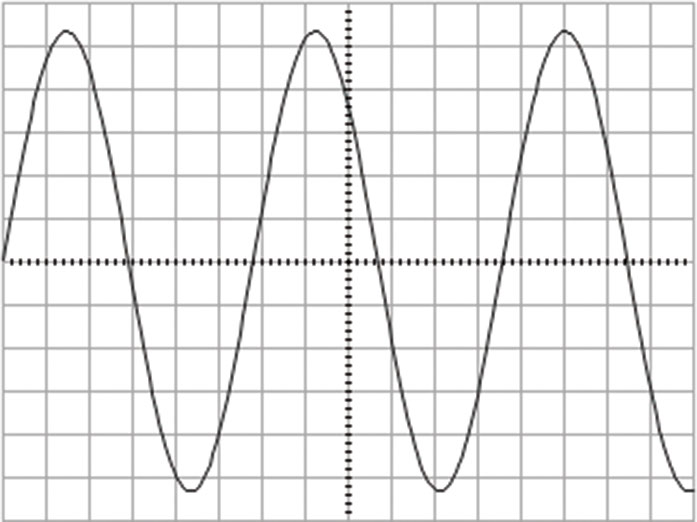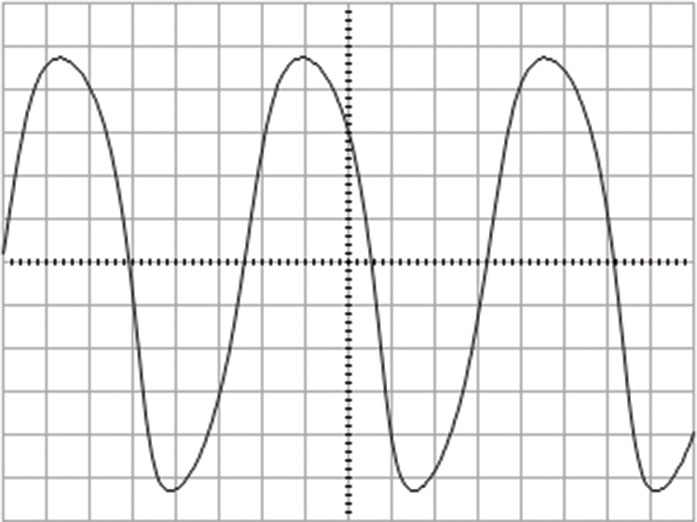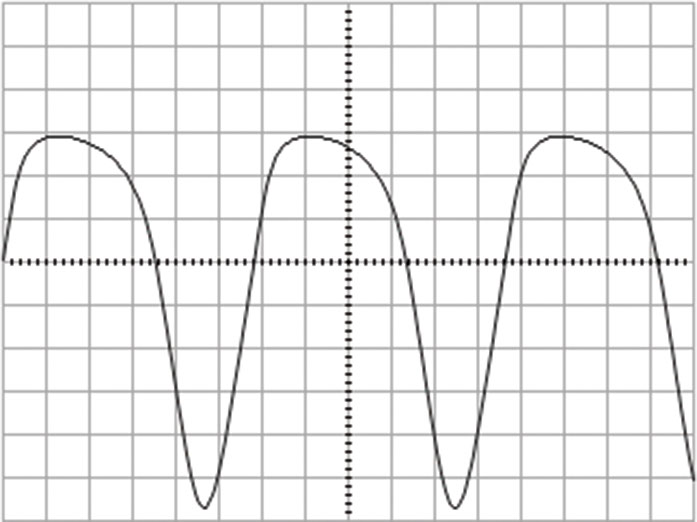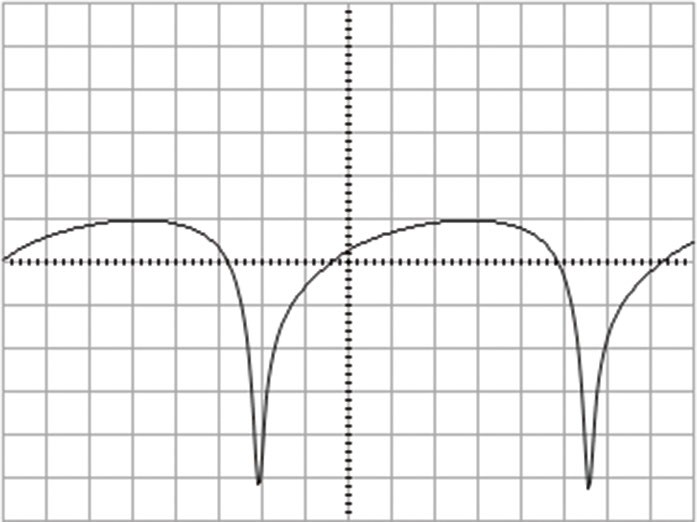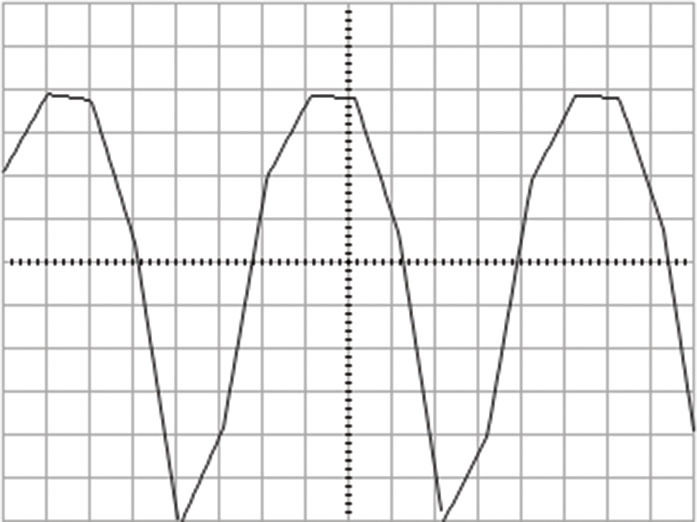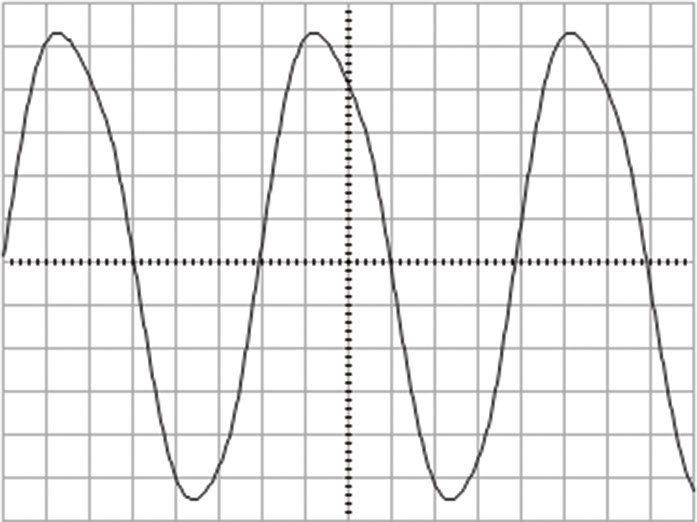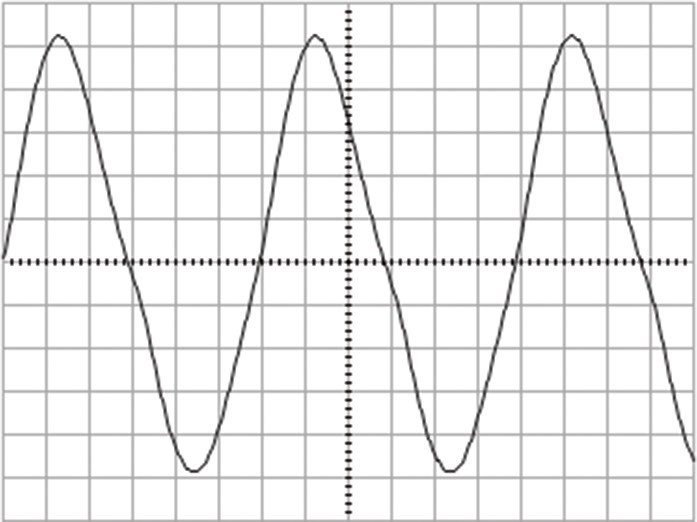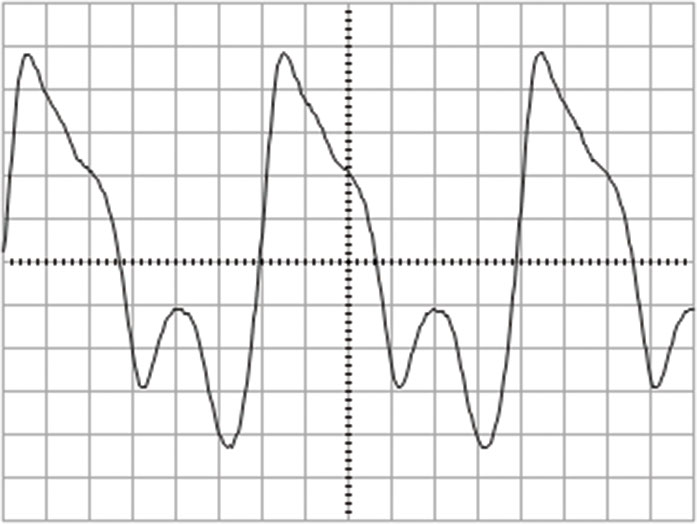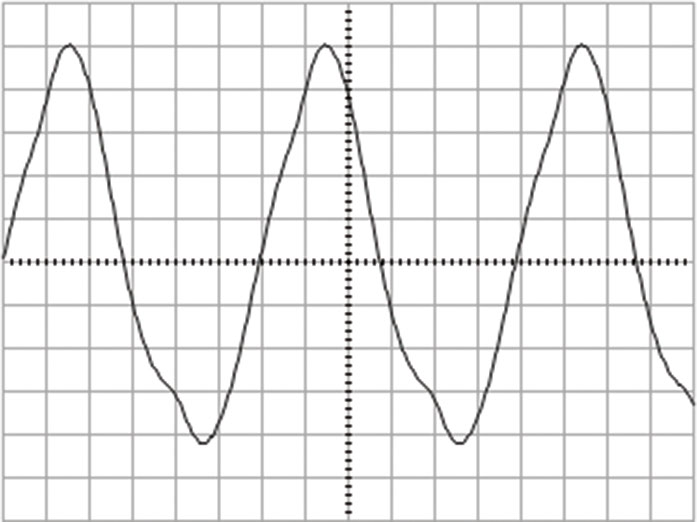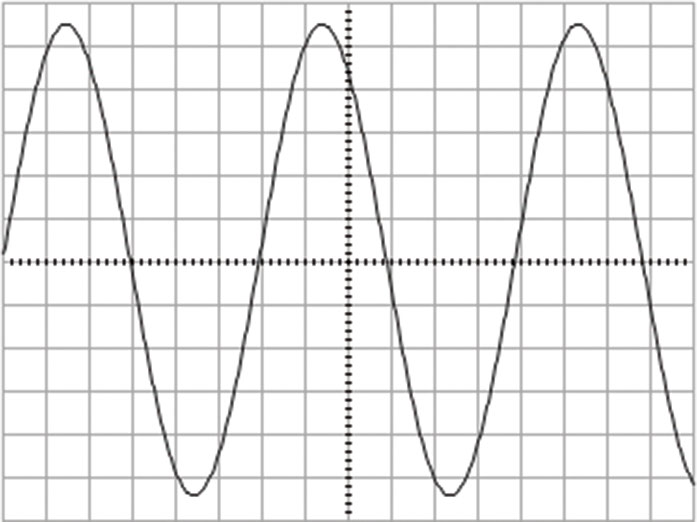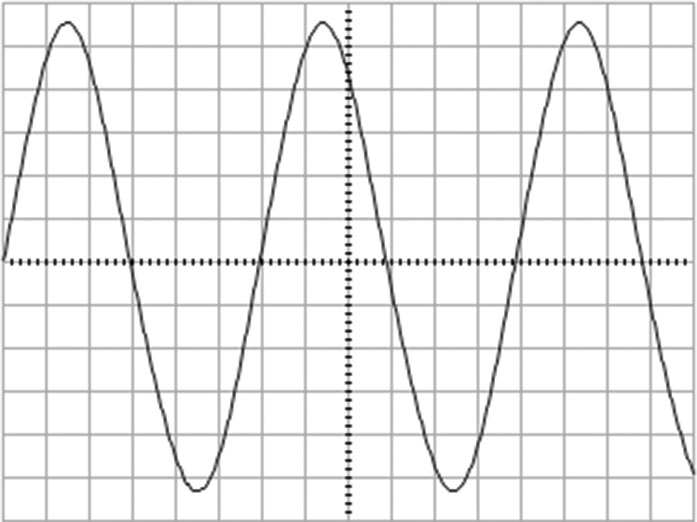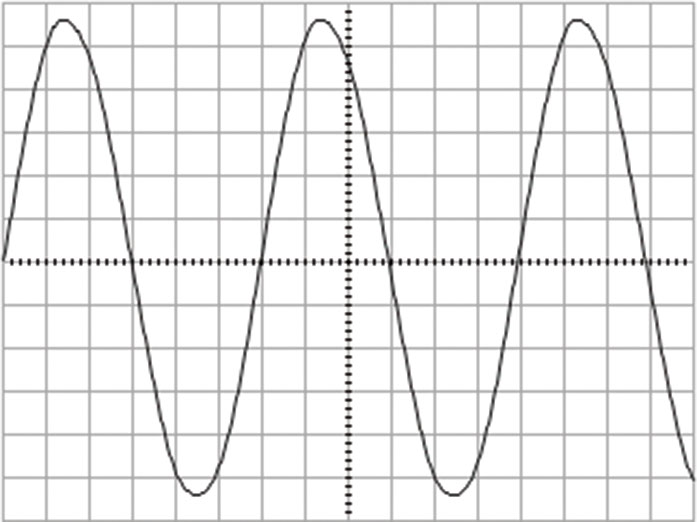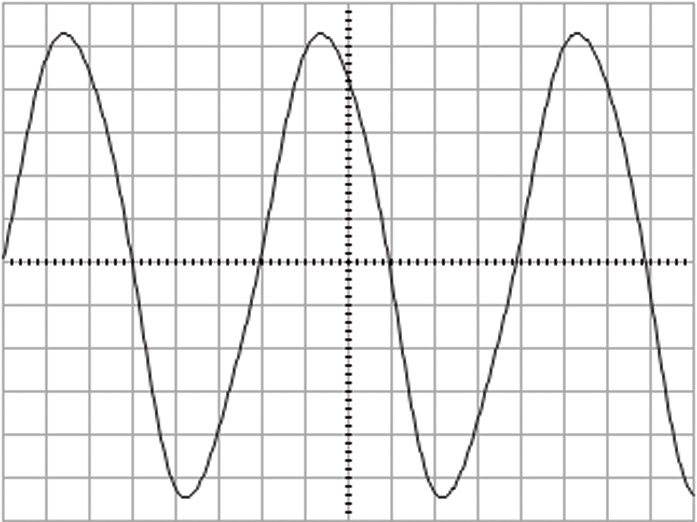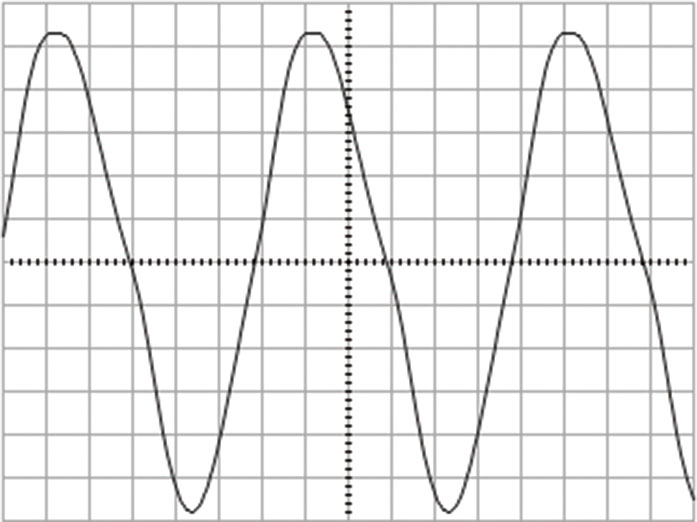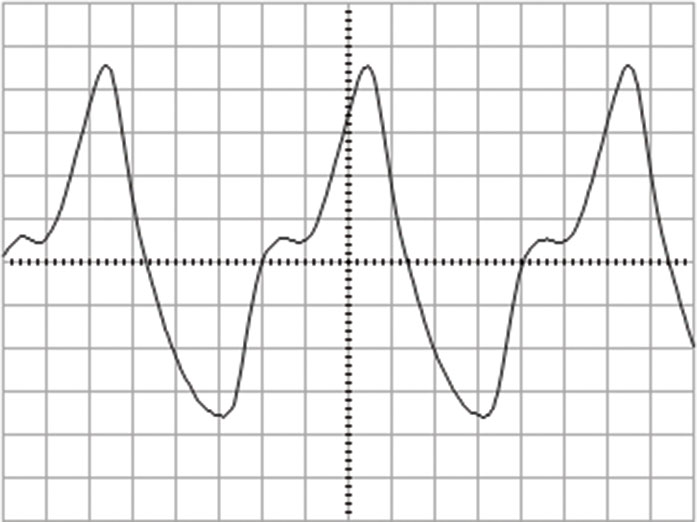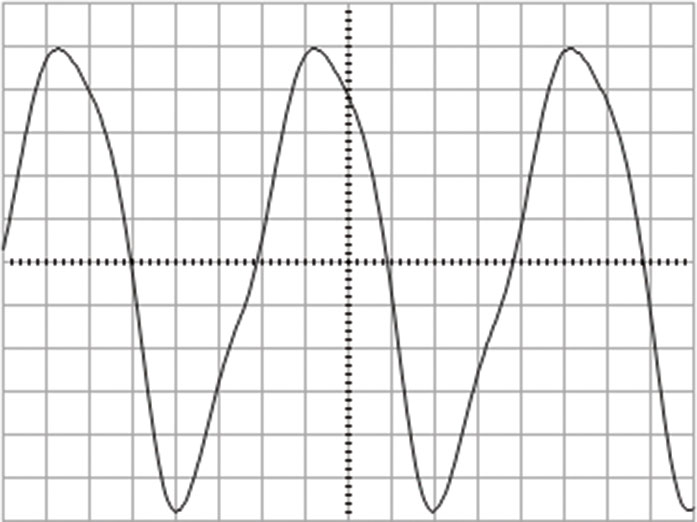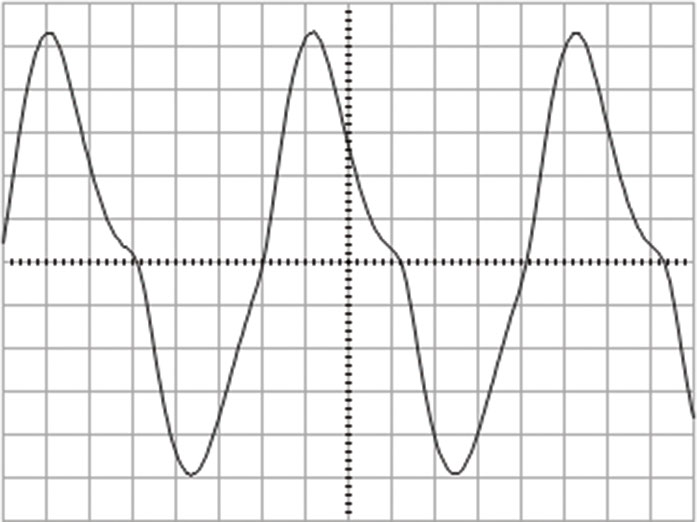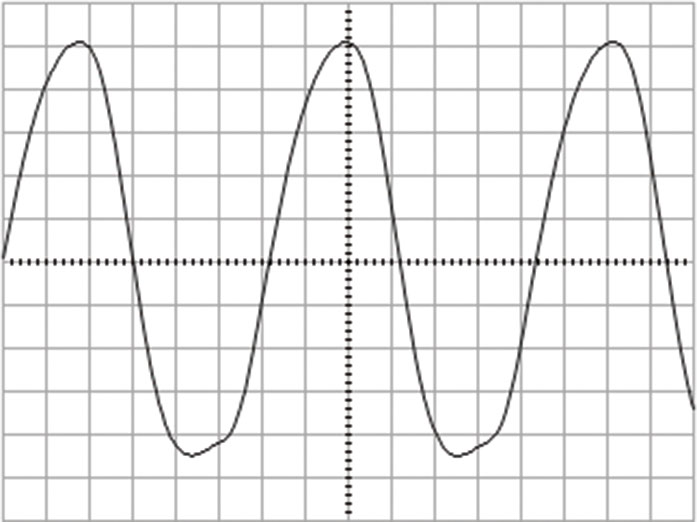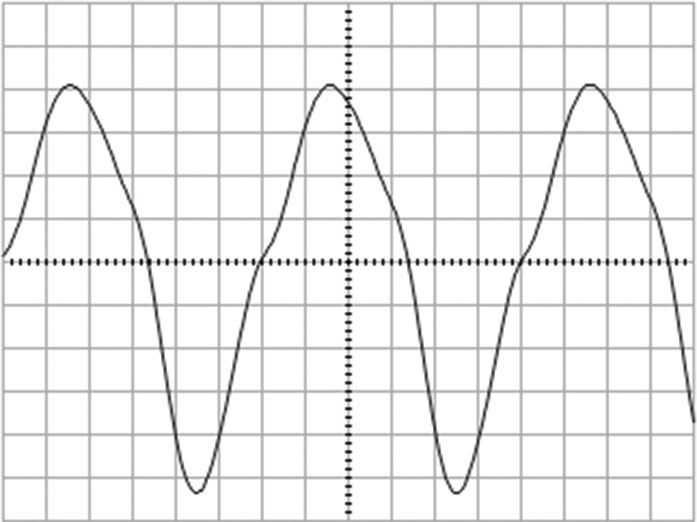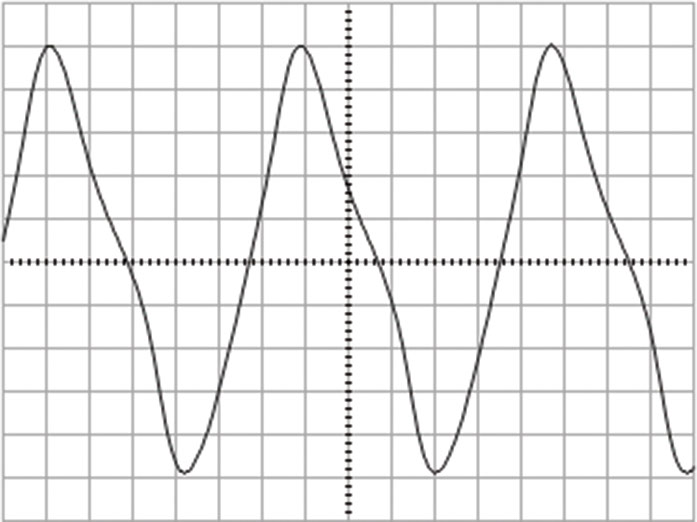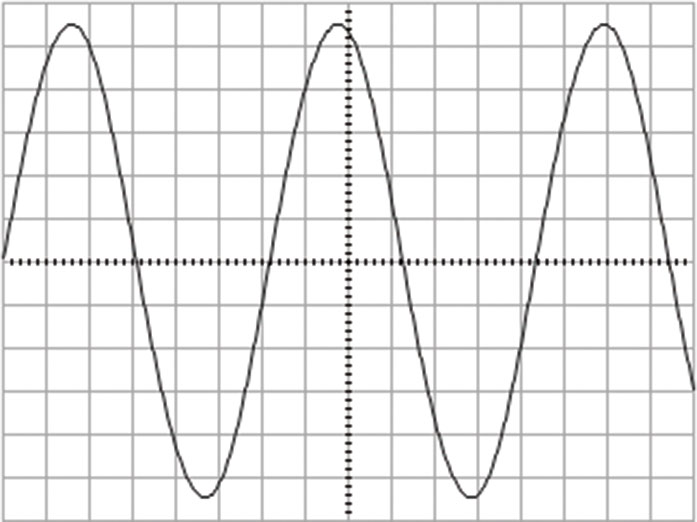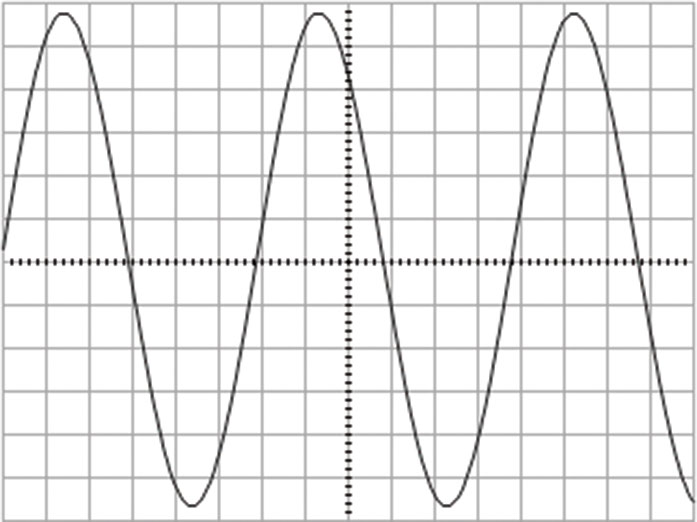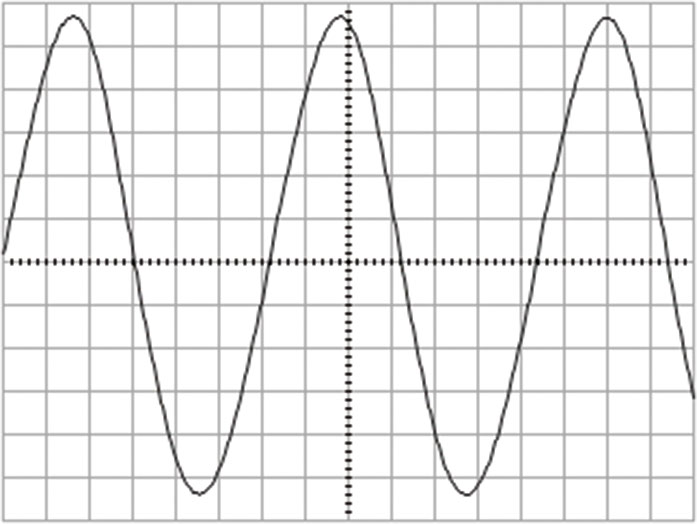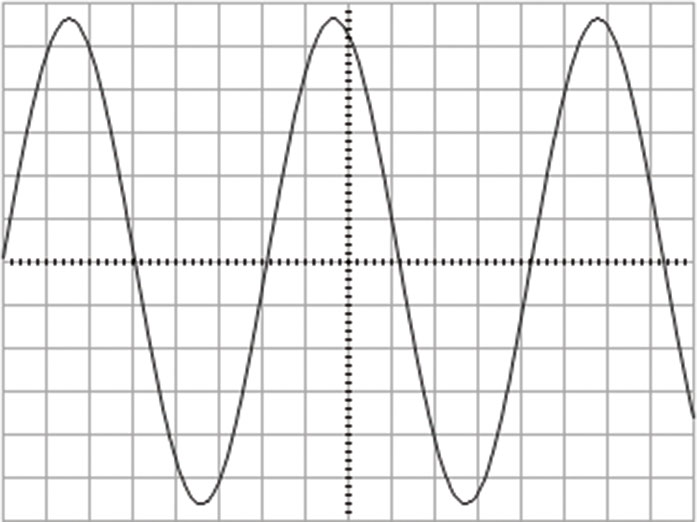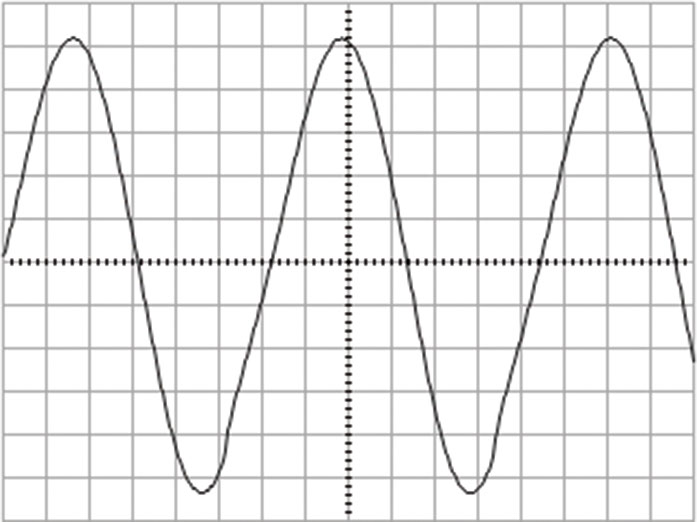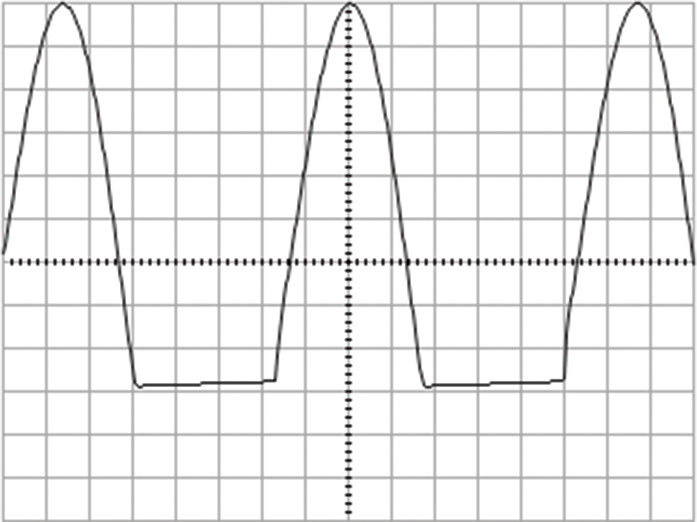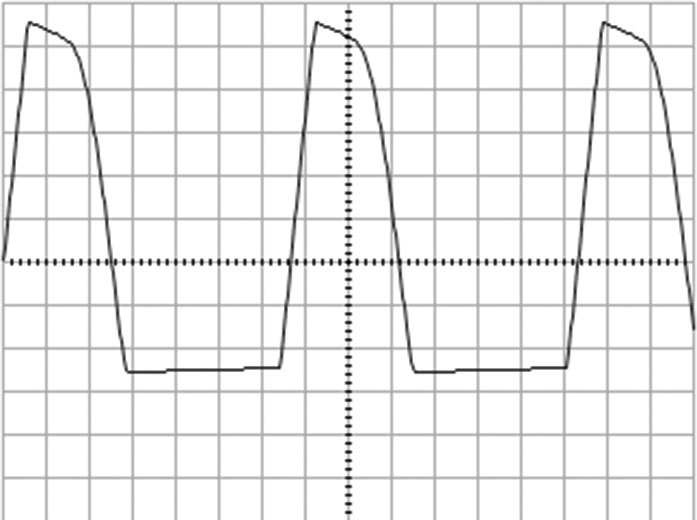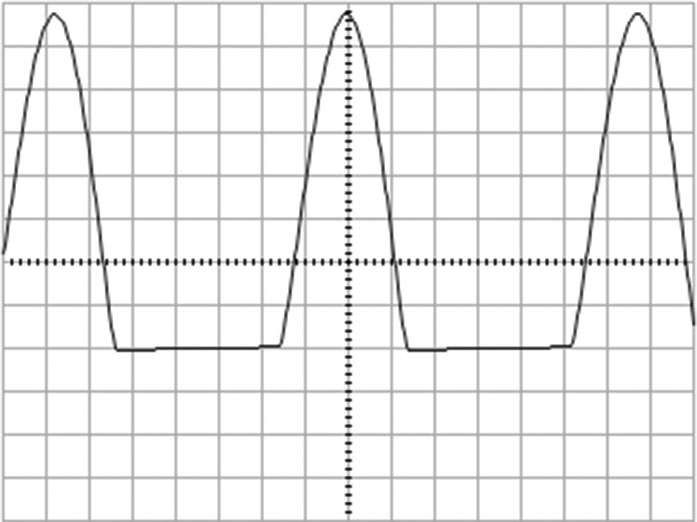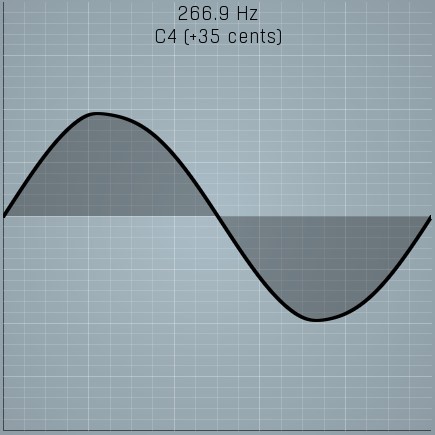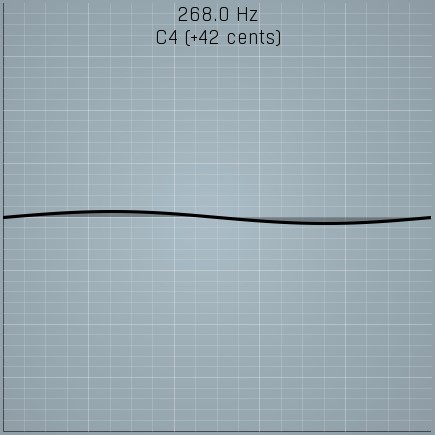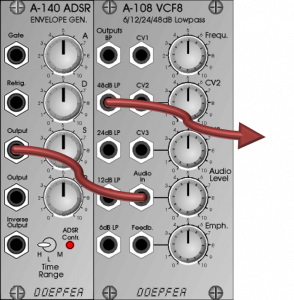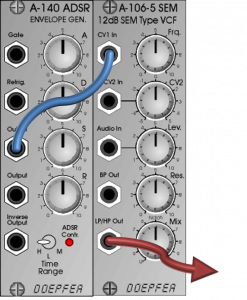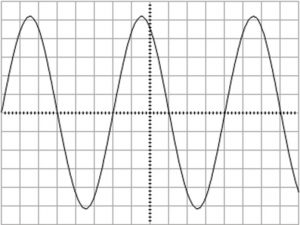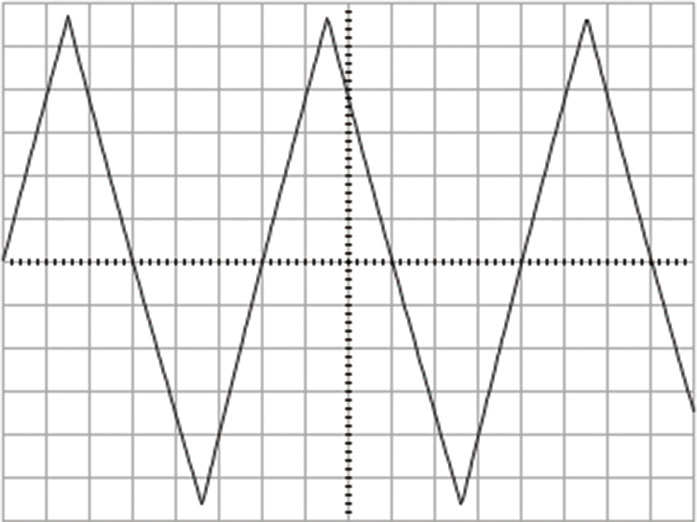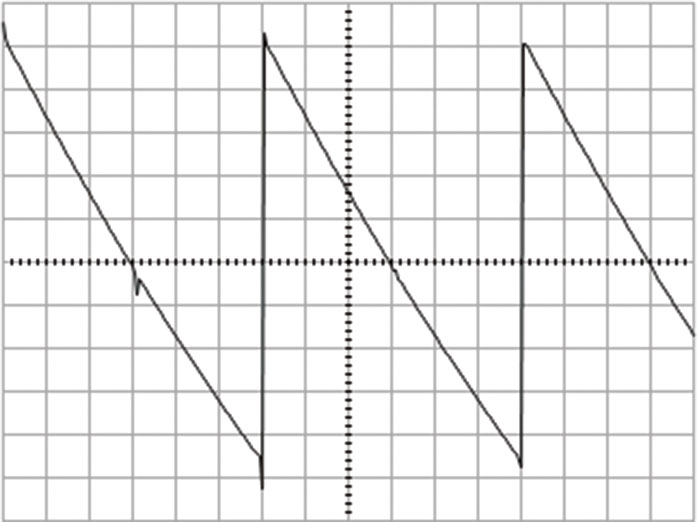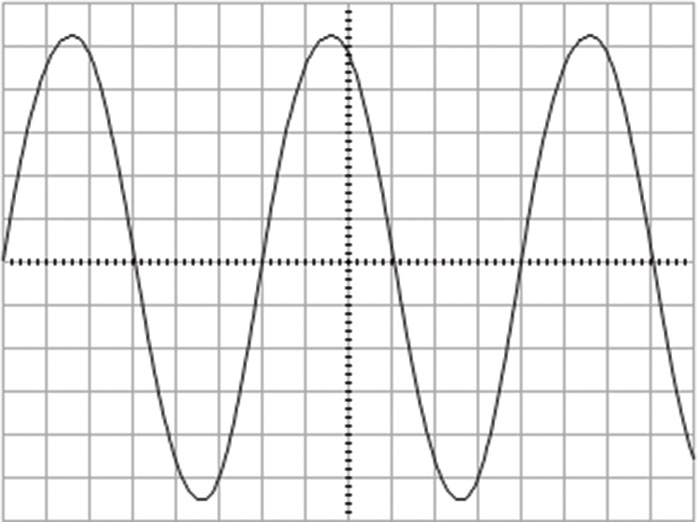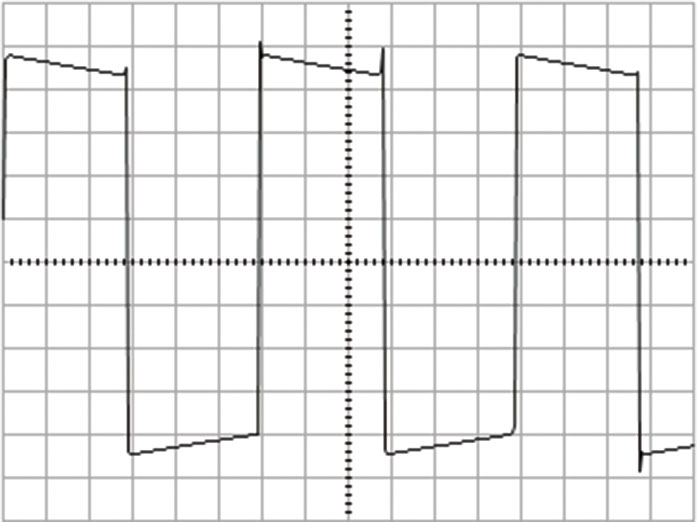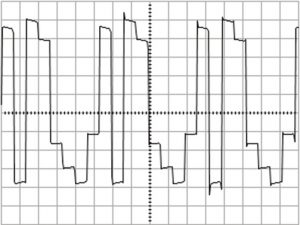At the beginning of every synthesizer sound is a module that creates the raw material for the sound. This can be a tone of a certain pitch because you want to play punchy bass lines or expressive solos, but that can also be “noise” and hissing or any sound material that is to be alienated, such as drums, guitar, vocals, you blowing into a plastic horn, environmental recordings from the forest or from the main station.
- Oscillators are the most well-known sound-generating modules. They generate oscillations with a defined pitch, which can be controlled via voltages in Voltage Controlled Oscillators (VCOs). In plain language: you can play melodies on the thing with a keyboard.
- Noise generators produce acoustic material without a defined pitch – just noise. Different technical processes produce noise of different colors.
- Finally, there are a few “unusual” modules that are also good for generating tones and noises – self-oscillating filters are the most common example.
Of course you can mix several of these sound generators before they are processed further: Two slightly detuned oscillators provide a floating sound, some noise added for a “smoky” sound, a sub-oscillator (which sounds 1 octave lower) is used to enrich etc.
Let your imagination run wild!
Good vibrations – oscillators
Oscillators create tones with controllable pitch. There are one or more control inputs for this, to which you can then apply the voltage of a keyboard, a sequencer or other modules. You can also connect the output of an oscillator (it’s just an alternating voltage) to the control input of another oscillator. FM synthesizers like the legendary DX7 basically work like this, but with digitally generated sine waves that have a mutually synchronous phase position. Analog FM sounds a little different because the VCOs oscillate independently. The result can be very interesting and lively, often metallic, depending on the frequency and volume ratio of the oscillators involved.
Most oscillators have outputs for different waveforms, common are sine, triangle, sawtooth and square or pulse, which sound significantly different due to their frequency spectra. The names derive from the form of these oscillations, as they can be made visible on an oscilloscope, for example.
Waveforms
A tone can be represented as a mixture of sine waves, starting with the fundamental tone, then as overtones further sine waves (usually with lower volume than the fundamental tone) with twice, three times, four times, five times, etc. the frequency of the fundamental tone.
A sine wave sounds very “round” (like a tuning fork) and has no other overtones. It is often used as the starting material for additive sound synthesis: For this you need as many sine generators as possible, whose amplitude and pitch you can control individually and flexibly. At least in theory, all possible sounds can then be produced with it. With an analog modular synthesizer, however, such projects quickly reach financial limits, so that additive synthesis is now preferably implemented with digital systems.
The triangle has a few more overtones – here you can already achieve small changes with filters. Sine and triangle are often used to create a bit of “pressure in the bass range” as an additional lower-tuned octave. Sine and triangle are also very effective as starting material in waveshapers, because dynamic overtone structures can be “folded out” from them quite impressively. The triangle only has odd overtones, the relative volume of which decreases with quadratic dividers (the third overtone has 1/9 amplitude, the 5th still has 1/25 amplitude, the 7th only 1/49, etc.)
The sawtooth has all overtones of the overtone series in decreasing volume with linear divider factors (the second has 1/2 amplitude, the third 1/3 amplitude, etc.). So there is rich harmonic material here to achieve very large tonal changes with filters. The sound is full and – slightly filtered – can be used well for “strings”.
The square wave or rectangle is basically similar to a sawtooth, i.e. the overtones also decrease in volume with linear divider factors, but like the triangle it only has odd overtones. The sound is somewhat “hollow” and reminiscent of woodwind instruments such as an oboe.
The pulse resembles the square wave but is no longer symmetrical. Instead, the width can be variably adjusted between 0% and 100% (at full 100% or 0% no more sound is audible, which is used, for example, by the A-111-5 Mini Synthesizer). Compared to the square, the lower overtones get quieter the further the pulse is from 50:50 symmetry. This makes the sound thinner and sharper overall. Most oscillators also allow the pulse width to be modulated: the resulting shifts in the overtone spectrum make the sound of a modulated pulse wave very similar to the sound of two slightly out-of-tune oscillators. Pulse width modulation has always been a popular trick for cheap 1-oscillator synthesizers to “broaden” the sound. An oscillator usually has a control input for pulse width modulation (PWM – Pulse Width Modulation).
The outputs of oscillators “make noise all the time”. The beginning and end of a note (e.g. when a key is pressed and released) is regulated much later, this task is performed by a Voltage Controlled Amplifier (VCA) which is controlled by an envelope voltage.
Synchronisation
Many oscillators also have an input for synchronization (“sync”). With each impulse that is applied here, the oscillation of the oscillator is restarted. If you take an oscillator (“master”) and feed its square-wave signal into the sync input of another oscillator (“slave”) that is oscillating half as fast, the slave’s waveform will restart mid-cycle. It suddenly has (a) a twice as high frequency and (b) a different sound, since, for example, a triangle wave becomes an ascending sawtooth (a triangle wave that is broken off halfway and restarted is a sawtooth). If the intervals are not based on simple frequency ratios such as octaves, very complex waveforms arise with sometimes quite inharmonic and metallic-sounding overtones. “Typical” sync sounds are created with slightly detuned oscillators (one or more octaves apart). A master with a lower frequency than the slave will not produce such dramatic changes.
VCO overview
Doepfer now has a fairly wide range of oscillators.
| Module: | Range: | Core: | Width: | Waveform: |
|---|---|---|---|---|
| A-110-1 Standard VCO | 7 octaves (15Hz – 8kHz) | Sawtooth | 10 HP | all* |
| A-110-2 Basic VCO | tbd | Sawtooth | 8 HP | no sine |
| A-110-4 Quadrature Thru Zero VCO | tbd | Sine | 8 HP | only sine (0° phase) & cosine (90° phase) |
| A-110-6 Trapezoid Quadrature Thru Zero VCO | tbd | Trapezoid | 8 HP | Sine, triangle, sawtooth, square (without PWM) plus trapezoid each in 0° and 90° phase |
| A-111-1 High End VCO | tbd | Triangle | 14 HP | all* |
| A-111-2 High End VCO II | tbd | Triangle | 14 HP | all* (improved sine compared to A-111-1) |
| A-111-3 Micro Precision VCO | tbd | Triangle | 4 HP | no sine |
| A-111-4 Quad Precision VCO | tbd | Triangle | 16 HP | Triangle, square, sawtooth |
| A-111-5 Mini Synthesizer Voice | (10 Hz – 12 kHz) | Triangle | 24 HP | no sine |
| A-111-6 Mini Synthesizer Voice | (32 Hz – 16 kHz) | Triangle | 10 HP | no sine |
| A-112 Sampler & Wavetable Oscillator | tbd | Sampler (digital) | 10 HP | dep. of samples |
| A-143-4 Quad VCLFO/VCO** | tbd | Triangle | 22 HP | Triangle, square (without PWM) |
| A-143-9 VC Quadrature LFO/VCO** | tbd | Sine | 8 HP | only sine (in 4 phases: 0°, 90°, 180°, 240°) |
** can be used as a VCO with limitations (tracking is not as accurate as with the “real” VCOs)
The two mini synthesizers A-111-5 and A-111-6 go well beyond conventional VCOs. With their integrated VCAs, filters and modulation sources, they provide self-sufficient synthesizer voices that, despite their compactness, come up with amazingly complex sound possibilities (filter FM, suboscillator, crossfade waveforms).
Posts on individual oscillators
In addition to the “classic” A-110-x and A-111-x VCOs, there are also modules that can oscillate in the audio range and can be controlled via control voltage, but can be used less precisely for tonal playing.
- A-110-1 Standard VCO
- A-110-2 Basic VCO
- A-110-4 Quadrature Thru Zero VCO
- A-110-6 Trapezoid Quadrature Thru Zero VCO
- A-111-1 High End VCO
- A-111-3 Micro Precision VCO / VCLFO
- A-111-4 Quad Precision VCO
- A-111-5 Mini Synthesizer Voice
- A-111-6 Miniature Synthesizer Voice
- A-112 VC Sampler / Wavetable Osc.
- A-143-4 Quad VCLFO/VCO
- A-143-9 Voltage Controlled Quadrature LFO/VCO
- A-188-1 BBD Module
We rustle
In addition to oscillators, which produce a sound with a defined pitch, noise generators are also very frequently used sound sources. Noise generators produce sounds whose pitch is no longer clearly identifiable, usually there is a random mixture of many different (very quickly and chaotically changing) frequencies. Depending on how the noise is generated, different timbres are created.
Noise can be generated in quite different technical ways. Analog noise generators like the A-118 use circuits that use noise from transistors or diodes, for example. There are also digital noise generators such as the A-117 or random number generators such as the A-149-1, which can generate noise when clocked quickly.
Analog noise
Early analog synthesizers distinguish between “white” and “pink” noise. Theoretically, white noise has sound components that are evenly distributed over the entire frequency range. “Evenly” here means that each frequency range has the same amount of noise, i.e. between 1,000 Hz and 2,000 Hz there is just as much noise as between 10,000 Hz. and 11.000 Hz. Mathematically, one speaks of a uniform “power density spectrum”. Subjectively, white noise sounds more high-pitched – like hissing.
Pink noise, on the other hand, has a different distribution: here the power density decreases with increasing frequency, but we subjectively find it to be “more balanced” than white noise. If you want to be very precise, then the power density of pink noise decreases by 3 dB per octave.
There are also other “color variants” that are rarely found in synthesizers. The designations are also not necessarily standardized. “Red” noise is similar to pink noise, but has a steeper drop in power density (6 dB per octave) over frequency, while “blue” noise has an even more treble-emphasised spectrum than white noise.
With all the math, don’t be fooled by the fact that noise generators in synthesizers are usually not laboratory instruments and therefore white noise from different synthesizer modules will always sound slightly different.
Doepfer has two – very similarly equipped – analogue noise modules in its range, the A-118-1 noise generator and the “Slim Line” noise generator A-118-2. In addition to white and colored noise, both also provide continuous random voltage. The A-118-2 can still come up with an integrated Sample & Hold or Track & Hold at half width (4 HP).
“Digital” or random noise
In addition to analog noise sources, there is also the possibility of generating noise using very rapidly clocked random pulses. The principle behind it is musically very interesting, because we start with a defined frequency – i.e. actually a fixed “pitch”. This frequency is the clock for a random number generator, which then – randomly – generates an output pulse for each clock pulse – or not. The tonality of the clock signal is largely lost as a result, but only largely and not completely! We can see that as the clock frequency changes, the noise changes, as if it actually had something like a pitch after all.
In addition to the A-117 Digital Noise module, you can also generate digital noise with the random modules A-152 or A-149-1 and A-149-2.
Posts on individual noise generators
In addition to the classic noise generators A-117, A-118-1 and A-118-2, fast clocked random generators can also generate noise.
- A-117 Digital Noise / Random Clock / 808 Sound Source
- A-118-1 Noise + Random Voltage
- A-118-2 Noise / Random / T&H / S&H
- A-149-1 Quantized/Stored Random Voltages
- A-152 Voltage Addressed Track&Hold / Switch
Unusual sound generators
Even if the use of ingenious random generators to generate filthy noise takes some getting used to – the arsenal of sound generators in the modular system is far from exhausted! Anything that can generate a reasonably fast AC voltage is automatically a “candidate” for interesting sounds!
Whistling filters are still quite common, but sequencers not only have to control the simplest bass lines, they can also produce sounds themselves. BBDs can do more than “chorus and flanger”, and even the supposedly slow LFOs are worth checking out.
By the way, did you know that a PLL is an intelligent oscillator that can sing along?
Filters as sound generators
You know filters as sound generators. Simply turn up the control for the self-oscillation (“Peak”, “Q”, “Emphasis” or “Resonance” – depending on the manufacturer or module), at some point the thing will beep. This works with many (not all!) filters even if there is no input signal at all. The result is usually a sine wave, which can often (but not always) be played tonally with a keyboard or sequencer via the control input for the cut-off frequency. Whether and how this works depends very much on the respective filter.
Why do you need something like that, the sine output of a VCO works just as well? Oscillators are usually significantly more expensive than filters, so that you can use the cheap substitute for a sine wave. Or the rack is full, but you still need a sine wave somewhere. Sometimes the sonic result of the filter’s natural oscillation is not a sine at all, but an extremely interesting “something”, such as with the A-106-1 Xtreme filter. With other filters, however, the generated sine wave is more precise than with simple oscillators – that can also be a reason for their use. Not every filter can be made to self-oscillate, and even then it is still important whether the frequency can be tonally controlled with a keyboard / sequencer. This requires a defined characteristic of 1 V / octave (analogous to the oscillators).
Another tip for tonal use: If you use filters as sine wave oscillators, once you have set the resonance, do not change it anymore! With many filters, the pitch of the generated sine wave would be shifted by different strengths of resonance (between the onset of self-oscillation and maximum resonance, the frequency drops about 1-2 semitones, depending on the filter).
The modules described here will always have a little scatter in the accuracy of the factory adjustment. This applies in particular to the possibility of being able to play self-oscillating filters tonally: what was fine with me over 2-3 octaves may be over with another module of the same type at less than 2 octaves. Components have variations, the final inspection as well, there are aging processes and with used modules you can occasionally find misaligned trimming potentiometers on the circuit board.
The oscilloscope images for the filters each show the oscillation form during self-oscillation. Most of the time it’s a sine wave, but not always. The saying about the filter as a sine generator does not apply in every case.
Suitable as an additional sound source (self-oscillation):
A-101-1 Vactrol VCF: The characteristic curve is not even close to 1 V / octave, so it cannot be used as a tonally playable sound source. The inertia of the vactrol also creates a clear “portamento” effect (“hauling” of the pitch when the cutoff-frequency changes quickly). The self-oscillation sets in relatively late (“Emph.” control approx. from 7) and has a slightly asymmetrical sinusoidal shape (or smoothed sawtooth shape). At higher self-oscillations (“Emph.” control approx. from 8) the signal begins to distort significantly (hard clipping) and changes into a square-wave signal.
A-101-2 Lowpass Gate: The behavior is similar to the A-101-1 (both filters are Vactrol based). Self-oscillation is only possible in “LP” mode, not in mixed VCA / VCF mode. In my sample, a pure sine wave without clipping is almost impossible to achieve: as soon as self-oscillation occurs, the signal is already distorted.
A-101-6 Opto FET Filter/Phaser: Instead of vactrols, optical field effect transistors work here. Over a relatively narrow range of approx. 1 octave, the tracking works to some extent according to 1V / octave, but the biggest shortcoming for “tonal playing” are unpredictable and sudden changes in frequency and amplitude. Sometimes the sine signal of the self-oscillation even breaks down completely without an input signal being supplied.
In addition, the generated sine wave is quite “angular” in the oscilloscope, so there is distortion. Lowpass and highpass modes do not differ significantly. Phaser (all pass) mode produces a distorted square wave.
A-102 Diode Low Pass: The characteristic is approximately 1 V / octave (approx. +/- 1 octave can be used tonally). The signal is a pure sine wave, which still has a large amplitude at higher frequencies, but becomes quieter at increasingly lower frequencies and then at some point even “breaks off” completely. This makes the filter not ideal for use as an “electronic bass drum”: Here, a low-tuned filter is modulated in self-oscillation with a fast envelope (decay). Very low frequencies are not reached, but the whole thing can still be used very well for “electronic tomtoms” à la Simmons drums.
A-103 18dB Low Pass (TB303 Type): The characteristic is approximately 1 V / octave, but the self-oscillation is not available over the entire frequency range: it only starts from about 1100 Hz, the amplitude is comparatively low overall.
A-105 SSM 24dB Lowpass Filter: The characteristic is approximately 1 V / octave (approx. +/- 1 octave can be used tonally). The self-oscillation produces a clean sine wave without “abnormalities”.
A-106-1 Xtreme Filter (no sine, but interesting): The characteristic is not even close to 1 V / octave, but nobody seriously expected that from an “xtreme” filter, right?
Depending on the clipping parameters “Cl+” and “Cl-“, the resulting waveform changes further.
In addition, the form of the self-oscillation of the A-106-1 filter changes dynamically with frequency. At higher frequencies, a clear base frequency can no longer be determined due to the chaotically changing oscillation forms.
A-106-6 XPander VCF (only the 8 filters of the right “Filter Group” allow self-oscillation): The characteristic curve is quite close to 1 V / octave (approx. +/- 2-3 octaves can be used tonally). Interesting for sound designers: The waveforms generated with self-oscillation differ between the different filter modes (especially with “2N 1L” and “3H 1L”) and sometimes deviate massively from the usual sine wave.
A-107 (only 18 of the 36 filters): Not all 18 modes capable of self-oscillation should be presented here, but only those that are missing in the A-106-6 and visibly deviate from the “boring” sine wave.
A-108 6/12/24/48 dB Low Pass / Band Pass (transistor cascade): The characteristic is approximately 1 V / octave (approx. +/- 2 octaves can be used tonally). A fairly exact sine wave is output. The amplitude of the self-oscillation increases from 48dB (the quietest) to 24dB, 12dB, 6dB up to the bandpass output with the largest amplitude.
A-109 VC Signal Processor: The A-109 also generates a fairly accurate sine signal in self-oscillation.
The filter of the A-111-5 Mini Synthesizer Voice module: The characteristic corresponds very precisely to 1 V / octave, so the filter can be played tonally over many octaves. The signal generated is also a fairly exact sine.
A-120 24 dB Low Pass 1 (transistor cascade): The characteristic is approximately 1 V / octave (approx. +/- 1 octave tonally playable). A special feature must be taken into account if the module is to be used without a downstream amplifier: If the output resistance is too low, the self-oscillation stops at low frequencies – here you should at least switch on a passive attenuator, which is set to about control position »8«. The A-120 produces a fairly accurate sine wave in self-oscillation.
A-121 Multimode VCF: The characteristic follows (at least in my sample) remarkably exactly 1 V / octave over several octaves! The oscillation forms of the four outputs are clearly different, the most exact sine comes from the “Notch” output, the self-oscillation is rather quiet in comparison (adjusted in the graphic).
A-121-2 12dB Multimode VCF: The completely different-sounding successor to the A-121 also has remarkably good tracking over several octaves.
The generated sine wave is relatively exact and, in contrast to the significantly “wilder” sounding predecessor, shows no significant differences between lowpass, highpass and bandpass – neither in the form of oscillation, nor in tracking or amplitude.
The only exception is the “Notch” mode. The self-oscillation generated here is also a sine wave, but it is much quieter than in all other filter operating modes.
A-122 24 dB Low Pass 2: The characteristic curve is approximately 1 V / octave (approx. +/- 1-2 octaves can be played tonally), the filter generates a pure sine wave signal (no figure).
A-123 24dB Highpass: Here, too, the characteristic curve is approx. 1V / octave and the module can be played tonally over approx. 2 octaves. However, my copy is a bit older, the module has not been produced for some time. The signal generated in the self-oscillation deviates from the sine wave, the positive part of the oscillation is wider than the negative one, both are also a bit “crooked”.
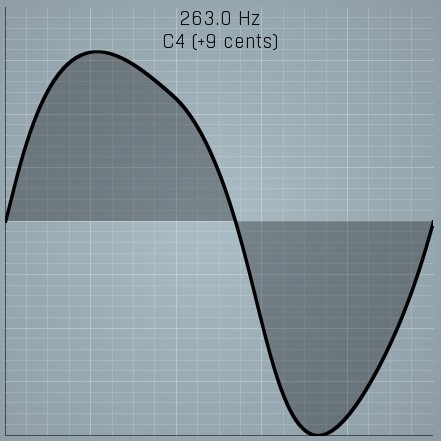
A-123-2 6/12/24dB Highpass: Characteristics and tonal playability are analogous to the predecessor A-123 (approx. 2 octaves are ok): The sine signal is, however, much cleaner, if not “perfect”.
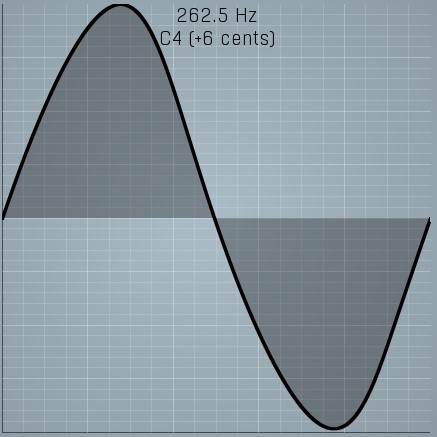
Limited suitability as an additional sound source (no self-oscillation, but sound generation via “Filter Ringing”):
- A-106-5 SEM VCF: The filter can be excited to a short tone with a short impulse at the audio input both in lowpass and in (fadeable) highpass and bandpass mode. The characteristic for this follows approximately 1 V / octave (approx. +/- 2 octaves can be used tonally).
- A-124 Wasp Filter: The same applies here as with the A-106-5, the tracking is somewhat less precise, so that the filter can only be used tonally over approx. +/- 1 octave.
- A-127 VC triple resonance filter: Self-oscillation is only possible at high cutoff-frequencies, but the filter can also be made to ring at lower frequencies by “pinging”. With careful adjustment of the “CV Ampl” control (approx. to 8), the filter can be used tonally over +/- 2-3 octaves. Special feature: Here we have three such filters (with individual outputs and separate control inputs!) available in one module.
Not suitable as an additional sound source (no self-oscillation):
- A-104 Trautonium Formant Filter.
- A-128 Fixed Filter Bank.
- A-129-2 Vocoder Synthesis Section.
- A-106-6 XP Filters: The filters on the left (“3A”, “2N”, “2H 1L”, “3H”, “2H”, “1H”, “3L”, and “1L”) are not capable of self-oscillation and cannot be used for »filter ringing« either.
More on filter ringing
“Filter Ringing” is caused by a short pulse in the audio input of the filter. The filter must be just before self-oscillation, the impulse can come from a digital random number generator (A-117), but also from a very short ADSR generator. This causes the filter to vibrate and produces a short tone that can be used, for example, for percussive sounds with associations with bass drums, bongos, raindrops, etc.
Feel free to try this with the output of an ADSR generator as “audio material” and a slightly longer decay or release time: the filter is stimulated twice in succession (possibly also with different intensities).
With the SEM filter, something is still possible!
A special trick that, to my knowledge, only works with the A-106-5 SEM filter: Sweep through the cutoff-frequency very quickly (with or without high resonance) and the filter produces percussively usable noise. An input signal is not required for this.
It is already clear here that each filter has its own “personality”: In addition to differences in the actual filter characteristics, there are a number of other aspects that can be used specifically to shape the sound.
Posts on individual filters
- A-101-1 Vactrol Multitype Input VCF
- A-101-2 Vactrol Lowpass Gate
- A-101-3 Modular 12 Stage Vactrol Phaser
- A-101-6 Opto FET Filter/Phaser
- A-102 Diode Low Pass Filter
- A-103 18dB Low Pass Filter
- A-104 Trautonium Formant Filter
- A-105-1 SSM 24dB Low Pass Filter
- A-105-4 Quad Poly SSI VCF
- A-106-1 Xtreme Filter
- A-106-5 12dB SEM Type VCF
- A-106-6 16-fold VC XPander Filter
- A-107 Multitype Morphing Filter
- A-108 6/12/24/48dB Low Pass Filter
- A-111-5 Mini Synthesizer Voice
- A-111-6 Miniature Synthesizer Voice
- A-120 24dB Low Pass Filter
- A-121 Multimode Filter
- A-121-2 12 dB Multimode Filter
- A-121s Stereo Multimode VCF
- A-123 24dB High Pass
- A-123-2 6/12/18/24 dB Highpass
- A-124 Wasp Filter
- A-125 Voltage Controlled Phase Shifter
- A-127 VC Triple Resonance Filter
- A-127BOM Breakout Module
- A-128 Fixed Filter Bank
- A-129 / 1 Vocoder Analysis & A-129 / 2 Vocoder Synthesis Section
LFOs as sound generators
The first Moog modular systems did not have an LFO. Anyway, you could take an oscillator and tune it down as needed until the desired frequency range was reached. For such purposes, the third oscillator of the Mini-Moog had an extra position for LFO operation on the octave selector switch.
Of course, the game also works the other way round: You can often tune an LFO far into the audible audio range. In principle, there is no real difference between the output signal of an LFO or that of a VCO: AC voltage is AC voltage, just usually in different frequency ranges.
But: The temperature compensation that is so important for a stable tonality is usually only provided by the “real” VCO.
What does that mean? In their raw state, most oscillators are comparatively sensitive to fluctuations in the temperature around them. If it gets warmer or colder, then the pitch of the oscillators also changes. In the hot spotlight of a concert (especially in the pre-LED era!) this can get quite uncomfortable and the synthesizer player is more concerned with retuning than playing. A “classic” solution is to equip the temperature-sensitive components of the oscillator (there are only a few) with a “heater” that heats them to a constant temperature (e.g. 60 degrees Celsius).
All Doepfer LFOs can also be used in the moderate audio range. The frequency of the following LFOs can be adjusted via control voltage (CV input):
A-143-4 Quad VCLFO/VCO
Compared to all other LFOs, the A-143-4 comes pretty close to a “real” VCO. Voltage control is relatively close to 1V / octave, we have square and triangle outputs and a reset (sync) option. And all this four times – very nice for drones.
A-143-9 VC Quadrature LFO
The A-143-9 is also an almost »real« VCO, the tonal range is very high (up to about 3 kHz). The LFO only outputs sine waves – in 4 phase-shifted variants. However, tuning to a 1 V / octave characteristic is a bit more precise with normal VCOs. More on this…
A-147 VC LFO
Due to the low frequency range (up to just under 180 Hz), it can only be used to a very limited extent as a sound source. However, the waveforms generated are very precise. More on this…
LFOs not controllable by CV
The LFOs that cannot be controlled via control voltage can also be interesting as sound generators:
The A-145 has normal and inverted sawtooth, sine, triangle and square and ranges in frequency to over 4,000 Hz.
The A-146 is extremely flexible with its infinitely variable waveforms (between sawtooth and triangle), but unfortunately only reaches just under 800 Hz.
Posts on individual LFOs
- A-111-3 Micro Precision VCO / VCLFO
- A-111-5 Mini Synthesizer Voice
- A-141-2 Voltage Controlled Envelope Generator VCADSR / VCLFO
- A-143-1 Complex Envelope Generator / LFO
- A-143-4 Quad VCLFO/VCO
- A-143-9 Voltage Controlled Quadrature LFO/VCO
- A-147-2 Voltage Controlled Delayed Low Frequency Oscillator
Envelopes as sound generators
Analogous to LFOs, envelope generators can of course also be used for audio purposes. Especially the very fast A-140 ADSR are well suited here.
To trigger the envelopes periodically, you also need a trigger signal in audio frequency (square-wave outputs from a fast LFO or VCO) or a comparator (e.g. A-167) that generates a trigger signal when the voltage falls below a certain level (e.g. in the release phase).
In addition to the A-140, the A-143-1 Complex Envelope Generator is particularly interesting: It can create unusual sounds by coupling the individual envelopes. But it’s not as fast as an A-140, so there are certain limits for higher frequencies.
Posts on individual envelope generators
- A-111-5 Mini Synthesizer Voice
- A-111-6 Miniature Synthesizer Voice
- A-119 External Input / Envelope Follower
- A-140 ADSR Envelope Generator
- A-141-2 Voltage Controlled Envelope Generator VCADSR / VCLFO
- A-141-4 Quad Poly VCADSR
- A-142-2 Dual Envelope Controlled VCA
- A-143-1 Complex Envelope Generator / LFO
- A-144 Morphing Controller
Sequencers as sound generators
The A-155 Sequencer is quite a useful “graphic” oscillator. “Graphically” because you can use the rotary controls to display the course of the waveform for the individual steps (sliders would of course be even more descriptive for this purpose). If you use a fast LFO or a VCO as a clock generator (each with a square-wave output), then the whole thing can also be played well tonally.
Zero crossings in the sequencer
If you adjust one or more “zero crossings” (i.e. set the output value of at least one of the 8 steps all the way to 0), then the frequency of the tone produced will increase.
“Scales” and tunable noise in the sequencer
Scale-like effects can be achieved by changing the first or last step (and thus the entire length of the sequence) on a connected A-154 Sequencer Controller. An A-154 Sequencer Controller can also be used to create a tunable noise (a bit similar to the A-117) by selecting “Random” via the A-154‘s “Mode” knob. The “frequency” of the noise can then be set using the A-154‘s “Clock” control.
Posts on individual sequencers
Previous chapter:
Next chapter:
